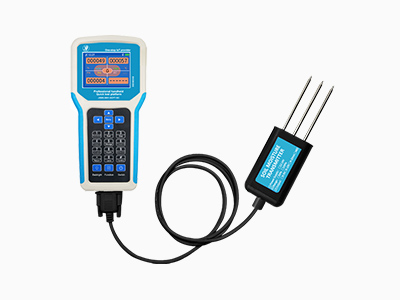Efficient irrigation and proper fertilization are essential for maximizing agricultural productivity while minimizing resource waste. Traditionally, farmers have relied on manual observations or general guidelines to determine when and how much water and fertilizer to apply. However, these methods often lack precision and can lead to over- or under-application, resulting in reduced crop yields and nutrient imbalances. Soil sensor data technology offers a solution to optimize irrigation and fertilization practices by providing real-time information about soil conditions. In this article, we will explore the benefits of using soil sensor data in agriculture and how it contributes to optimizing irrigation and fertilization practices.

Precise Soil Moisture Monitoring:
Soil sensors provide farmers with real-time data on soil moisture levels. This information allows for precise irrigation management by ensuring that crops receive the right amount of water at the right time. With soil sensor data, farmers can accurately assess soil moisture content and adjust irrigation schedules accordingly. By avoiding under- or over-irrigation, farmers can optimize water use, conserve resources, and promote healthy plant growth, leading to higher crop yields.
Tailored Irrigation Schedules:
Soil sensor data enables the customization of irrigation schedules based on specific crop requirements and soil conditions. By monitoring soil moisture trends, farmers can identify optimal irrigation timing, taking into account factors such as evapotranspiration rates and weather patterns. This tailored approach ensures that crops receive water when they need it most, reducing water stress and improving overall water-use efficiency. By optimizing irrigation schedules, farmers conserve water resources, minimize energy consumption, and enhance sustainable farming practices.
Improved Nutrient Management:
Soil sensor data provides valuable insights into soil nutrient levels, allowing farmers to fine-tune fertilizer application rates. By continuously monitoring nutrient availability, farmers can adjust fertilizer timing and dosage to meet crop demands accurately. This precision in nutrient management avoids over- or under-application, reducing the risk of nutrient leaching, groundwater contamination, and nutrient imbalances. Optimized nutrient management leads to improved plant health, increased crop yields, and cost-effective use of fertilizers.
Assessing Soil Salinity:
Soil salinity can have a significant impact on plant growth and productivity. Soil sensors equipped with salinity measurement capabilities allow farmers to monitor salt levels in the soil. By monitoring soil salinity trends, farmers can identify areas prone to salt accumulation and take appropriate measures to manage salinity levels effectively. This might involve implementing leaching techniques or adjusting irrigation practices to prevent salt buildup and maintain an optimal growing environment. By optimizing soil salinity, farmers ensure healthy plant growth, maximize crop yields, and preserve soil fertility.
pH Monitoring for Optimal Nutrient Uptake:
The pH level of the soil directly affects nutrient availability to plants. Soil sensors can measure soil pH, enabling farmers to assess and manage soil acidity or alkalinity. By regularly monitoring soil pH trends, farmers can make necessary adjustments to maintain the optimal pH range for specific crops. This optimization of soil pH ensures efficient nutrient uptake by plants, improving overall plant health and productivity. Proper pH management also supports beneficial soil microbial activity, facilitating nutrient cycling and enhancing soil fertility.

Integration with Precision Farming Technologies:
Soil sensor data can be integrated with precision farming technologies, such as variable rate irrigation (VRI) and variable rate fertilizer application systems. By combining soil sensor data with spatially precise equipment, farmers can apply water and nutrients more accurately based on specific soil conditions across their fields. This targeted approach maximizes resource efficiency, reduces input costs, and minimizes environmental impacts. Integration with precision farming technologies empowers farmers to implement site-specific management strategies, leading to optimized irrigation and fertilization practices and improved crop yields.
Conclusion:
Optimizing irrigation and fertilization practices is crucial for maximizing agricultural productivity while minimizing resource waste. Soil sensor data technology provides valuable insights into soil moisture, nutrient levels, salinity, and pH, enabling farmers to make informed decisions regarding irrigation and fertilization scheduling. By customizing irrigation and fertilizer application based on real-time soil conditions, farmers can ensure efficient resource utilization, promote healthy plant growth, and increase crop yields. Integration with precision farming technologies f
